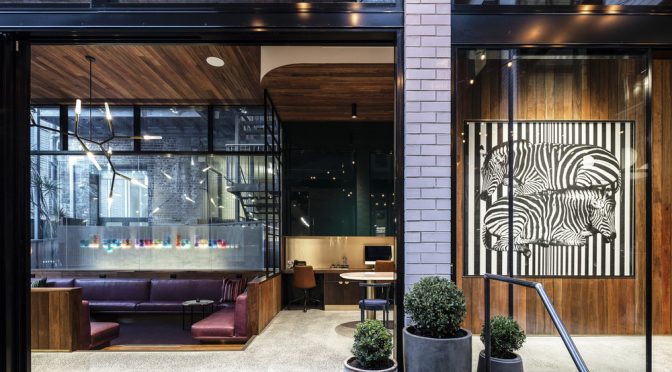The walls of the small hotel ‘Little Albion Guest House’ are the synthesis of a rich past full of history, the same that Cressida Kennedy and Connie Alessi have refreshed with an almost kitsch design.

Cressida Kennedy, it is clear, likes to tell a unique story in each of its interior design projects, making reference to the place where they are located, their purpose and cultural, social and historical aspects of their own environment. He has been doing it since eight years ago he founded Space Control, the studio where he works as the new Little Albion Guest House, in the neighborhood of Surry Hills, Sydney. “I love every stage of the process and in particular the discovery phase, especially when there is an existing building,” says the designer, which is exactly the case of this small boutique hotel, which she has created in collaboration with Connie Alessi, and which, to a large extent, it occupies a former convent dating from 1903. The rest is in a more recent extension characterized by a structure of white brick, steel and glass that recalls the brutalist architecture of the neighborhood developed in the last half of the 20th century. of her work, Cressida Kennedy seeks “solutions to problems related to space and function, as well as indications on the details of origin to see how to integrate them into a new scheme with the aim of transmitting something deeper”.
From the beginning, the designer wanted to give it a 70s touch by incorporating one of the hallmarks of this period, a sunken lounge. From this element, he imagined the global aesthetic of Little Albion Guest House, focused on the decades of the 20’s and 70’s. The public areas of the hotel and the 35 rooms stand out for their eclectic mix of colors, floral and geometric motifs ( for example through linen curtains and cement tiles), textures and materials.
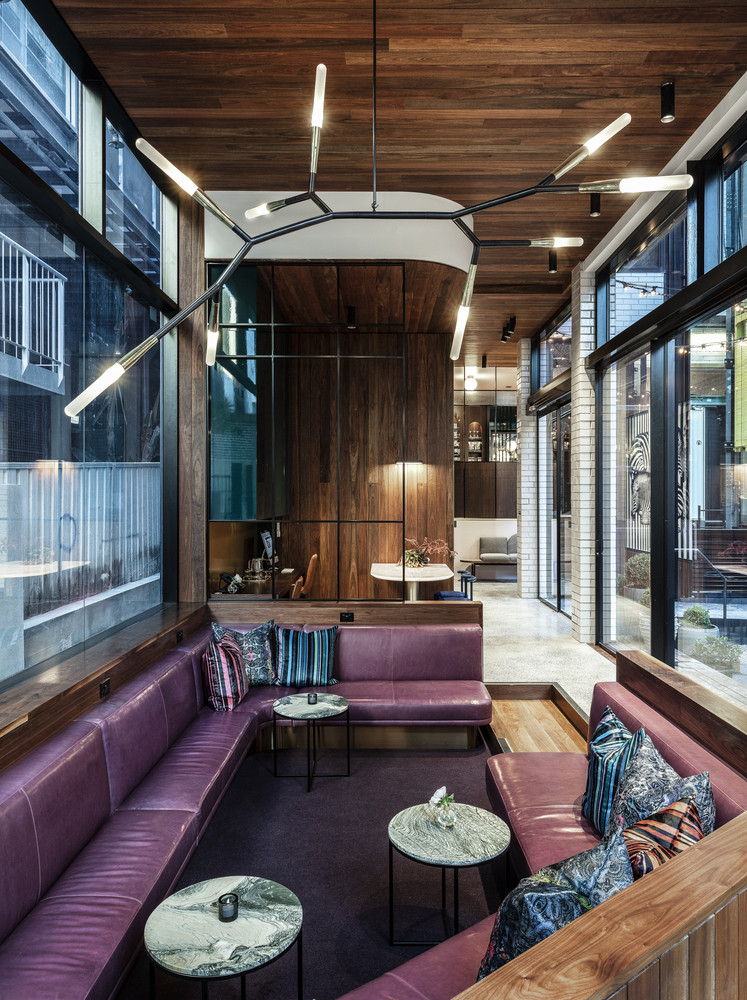

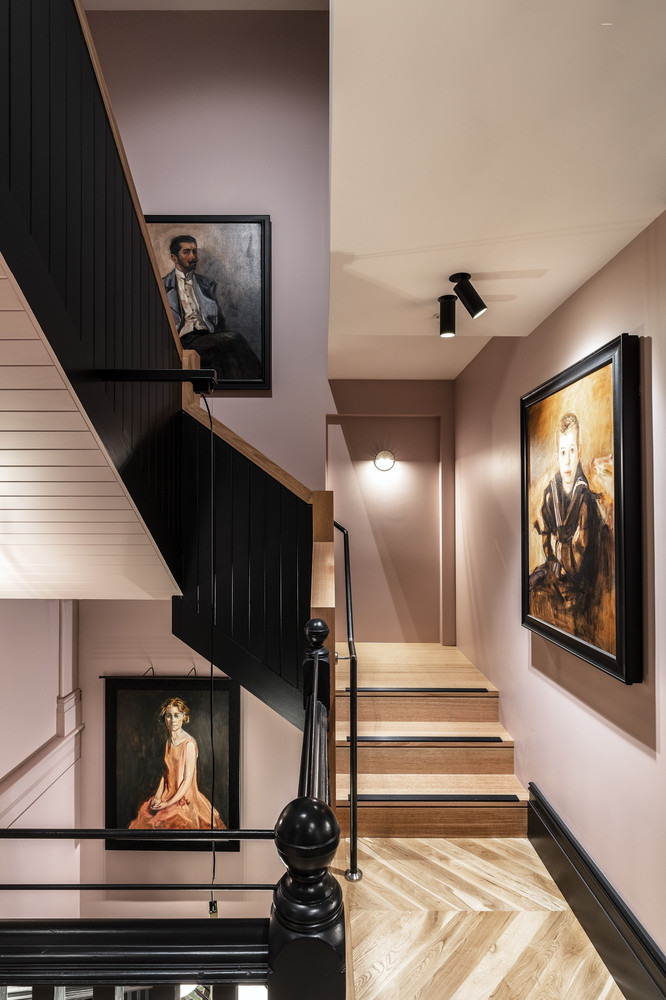
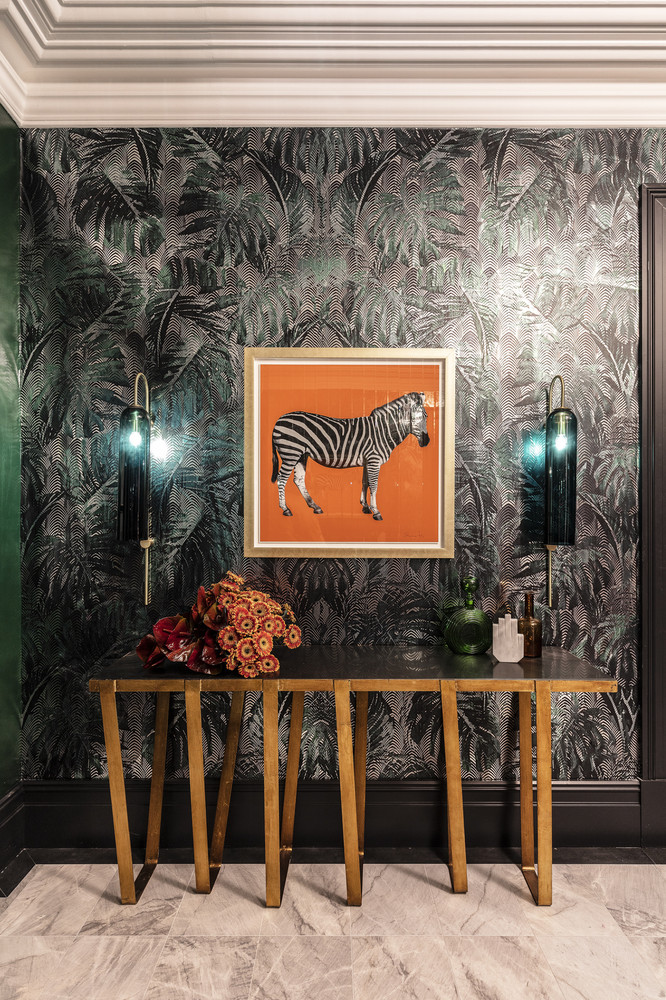


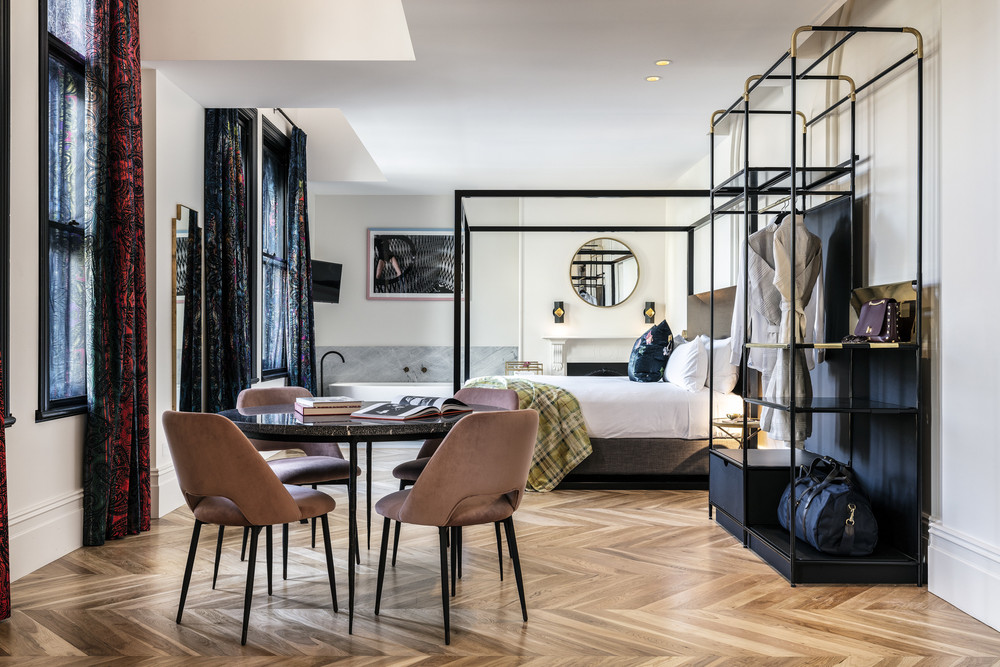
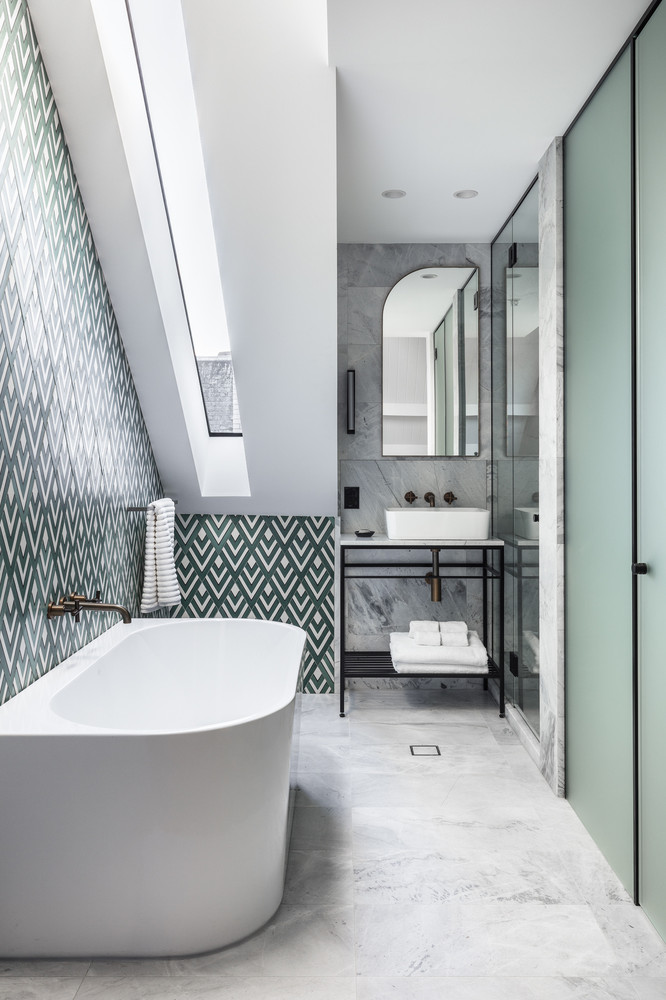
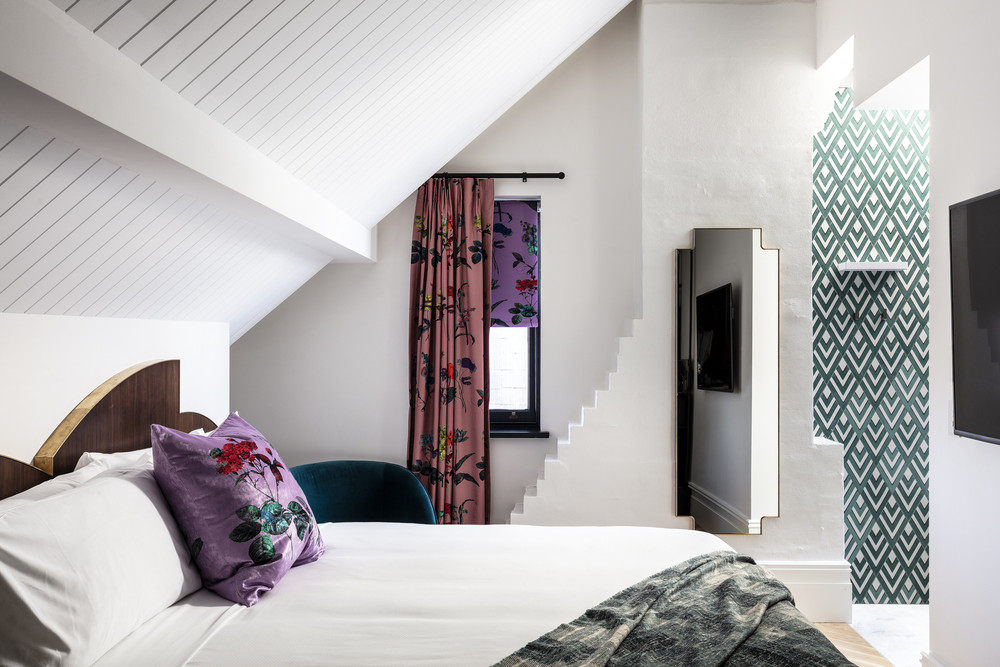
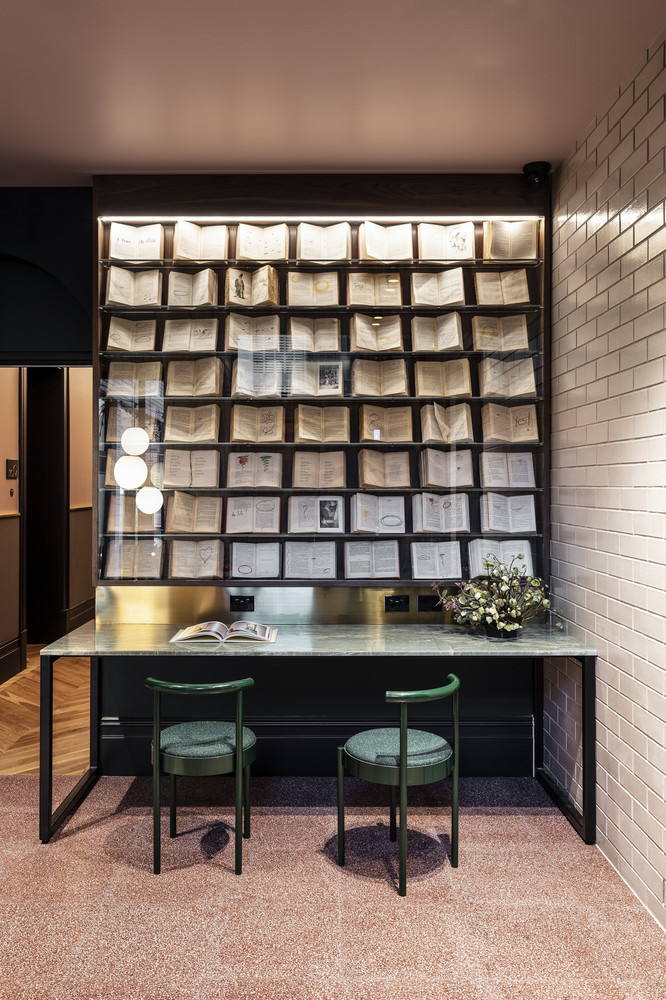
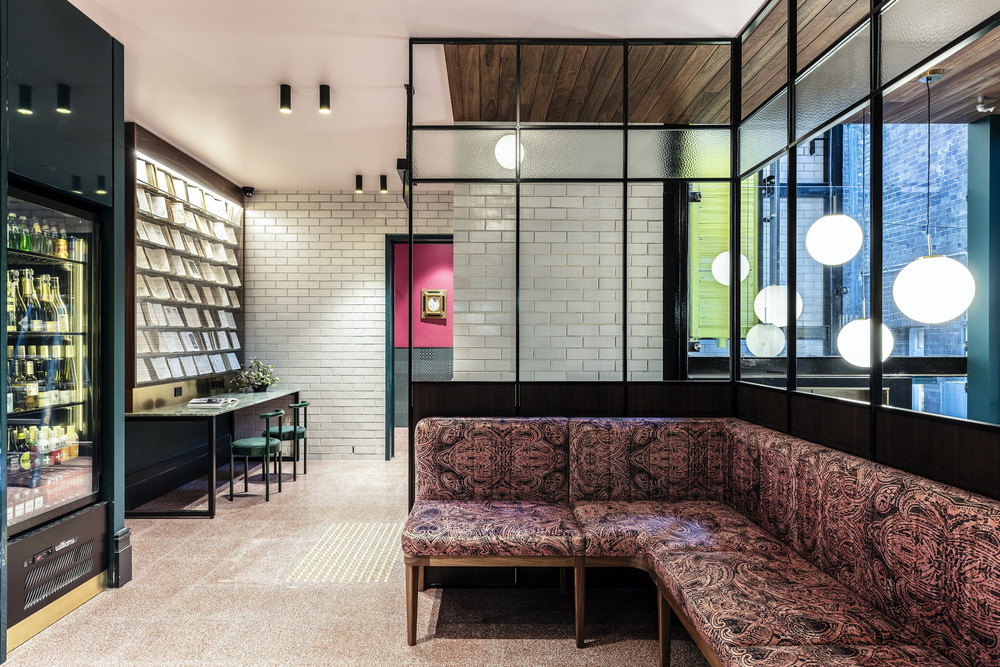
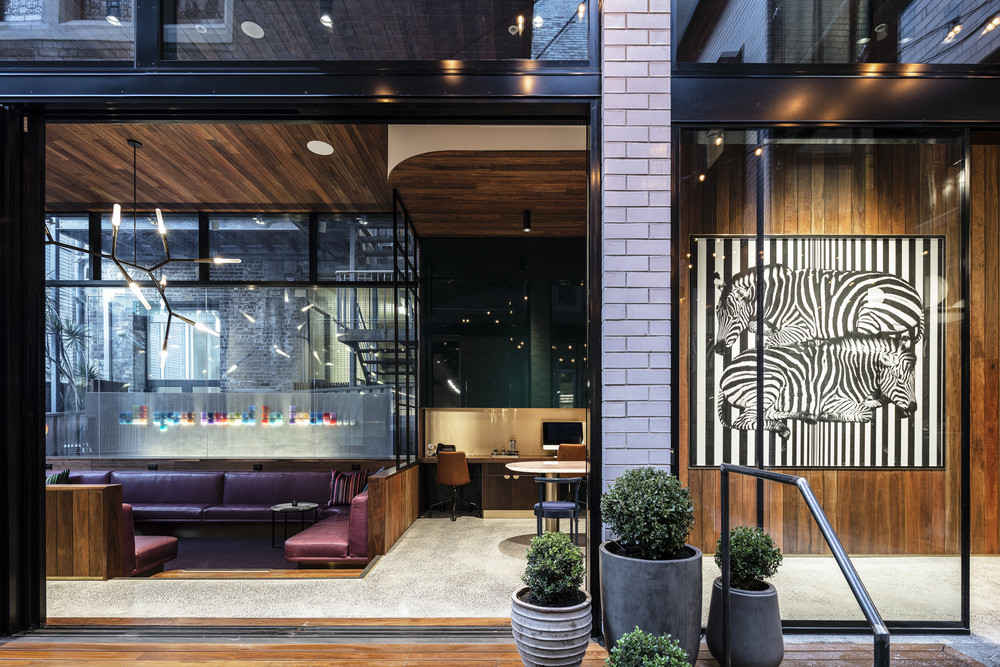

Some daring touches are combined with pieces of wooden furniture and brass or marble details. In addition, the photographs of the well-known artist Nicholas Samartis adorn these inspiring spaces where irregular rooms and narrow angles are discovered, particularly in the historic building. To create consistency across all areas, Cressida Kennedy decided to include terrazzo tiles, wood paneled ceilings and walls with graphic motifs in the new extension, constantly connecting the old with the new.


